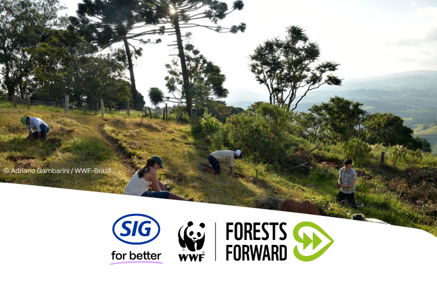Riding the wave of protein demand with aseptic packaging

In recent years, the world has witnessed a surge in protein consumption, driven by increasing health consciousness, changing dietary habits, and a growing global population. This protein boom encompasses both animal-based sources and the plant-based protein market. As demand surges, the food industry faces new challenges in delivering fresh, convenient, and sustainable protein products to consumers worldwide. Entering aseptic solutions - that's reshaping how we package and consume protein-rich foods and beverages.
Protein has emerged as a nutritional powerhouse, offering a myriad of benefits. From muscle building and weight management to supporting immune function and blood sugar control, its role in overall well-being is undeniable. This has propelled protein-rich products into the spotlight, driving innovation and product development across various food and beverage categories.
The protein shift: A global phenomenon
Before the existing protein craze, the masses relied on diverse protein sources. Traditionally, the consumers relied heavily on plant-based proteins. Soy protein was a popular vegetarian option due to its affordability and complete amino acid profile. Casein, derived from milk, offered sustained protein release. Egg whites were a favorite among fitness enthusiasts.
However, modern consumers seek convenient, high-quality protein sources to support their active lifestyles. Whey protein's complete amino acid profile and rapid absorption have made it a preferred choice. Factors such as growing health consciousness, the proliferation of gyms, and influencer endorsements have contributed to its meteoric rise.
The rise of protein: What's driving the surge in popularity?
Once considered a niche product, protein has now surged in popularity and become a staple in many diets. But what exactly is driving this protein pandemonium?
- Health benefits: From fitness enthusiasts to a commoner, everyone is hopping on the protein bandwagon.
- Growing awareness: We are increasingly conscious of the pivotal role protein plays in the health culture, which has boosted demand for protein supplements and fortified foods.
- Fitness boom: The proliferation of fitness studios, and wellness centers have created a thriving ecosystem for fitness enthusiasts.
- Plant-based revolution: Environmental and ethical concerns are driving a shift towards plant-based protein sources.
The plant-based protein revolution
While animal-based proteins continue to dominate the market, driven by environmental concerns and dietary preferences, plant-based proteins have gained significant traction. The industry is witnessing a growth of plant-based alternatives, ranging from soy and peas to rice and hemp. While offering a sustainable and inclusive protein source, the challenge lies in replicating the sensory attributes of traditional protein products. Other factors that is a pull factor:
- Market expansion: The global plant-based protein market generated $11,104.3 million by 2020, to grow at a CAGR of 9.2% during 2020-2030
- Innovation in sources: Beyond traditional soy and wheat proteins, novel sources like peas, rice, hemp, and algae are gaining traction.
- Improved taste and texture: Advancements in food technology have led to plant-based products that closely mimic the taste and texture of animal proteins.
- Sustainability factor: Plant-based proteins are considered to have a lower environmental impact, appealing to eco-conscious consumers.
Tailored solutions for consumer needs
Understanding consumer preferences is crucial for success in the protein market. Factors such as flavor profiles, convenience, certifications, and price sensitivity influence purchasing decisions. SIG's packaging solutions are designed to address these needs and provide a competitive edge. Our aseptic packaging technology offers a robust solution by:
- Uncompromised freshness: Extended shelf life without compromising taste or nutritional value.
- Superior taste: Protection against light and oxygen to preserve the authentic flavor of the protein by reserving nutrients, flavors, and textures.
- Unparalleled convenience: Shelf-stable options for on-the-go consumption.
Transforming packaging for the future
SIG offers more than just packaging; we provide comprehensive solutions to help brands thrive. Our expertise in aseptic filling and global reach enables us to deliver tailored solutions.
- Sustainability: Our packaging solutions help customers achieve their sustainability ambitions.
- Efficiency: We optimize packaging solutions to enhance production efficiency, reduce waste, and improve overall cost-effectiveness for our customers. Innovation: We are committed to pioneering new technologies that enhance sustainability and consumer satisfaction. Our continuous research and development ensure we stay ahead of market trends.
To thrive in this dynamic market, brands must prioritize consumer needs. Customization, transparency, and convenience have become paramount. Consumers seek personalized protein solutions to their specific dietary requirements and lifestyles. Moreover, the emphasis on clean-label products and sustainable practices has reshaped the industry landscape.
- September 02, 2024

Forest freeways: Keeping nature connected

Co-packaging: The future of FMCG

